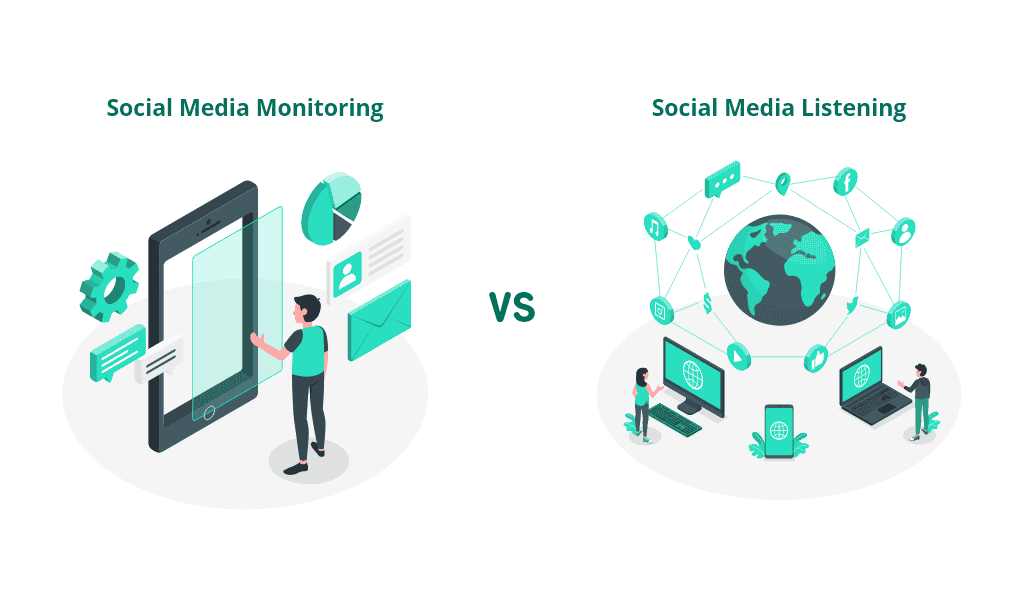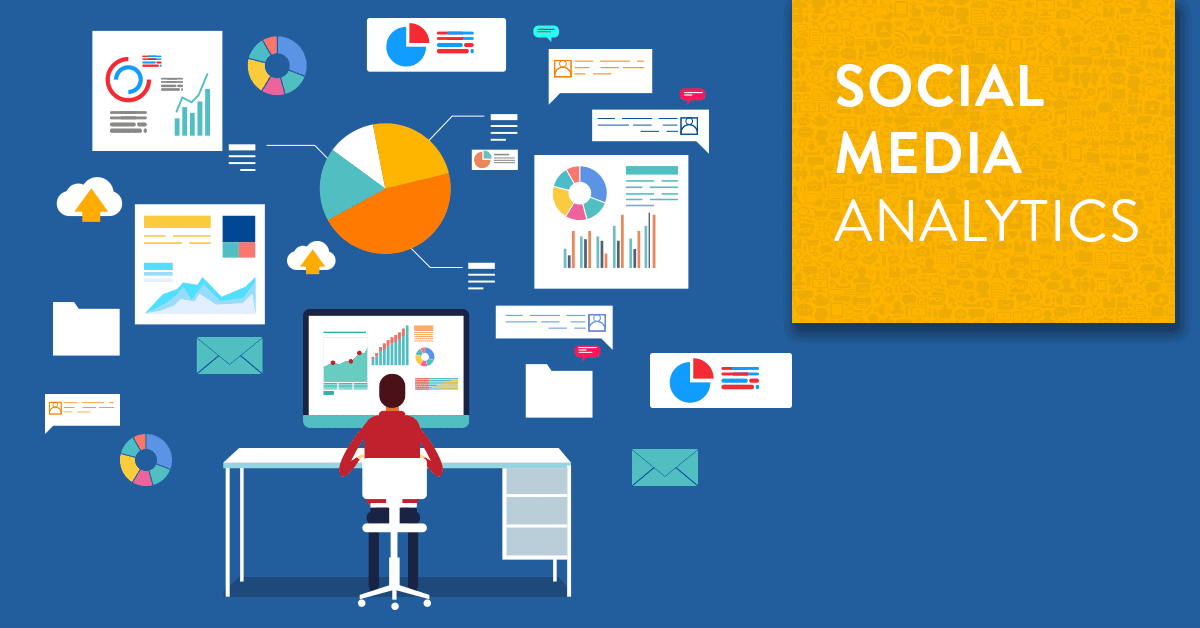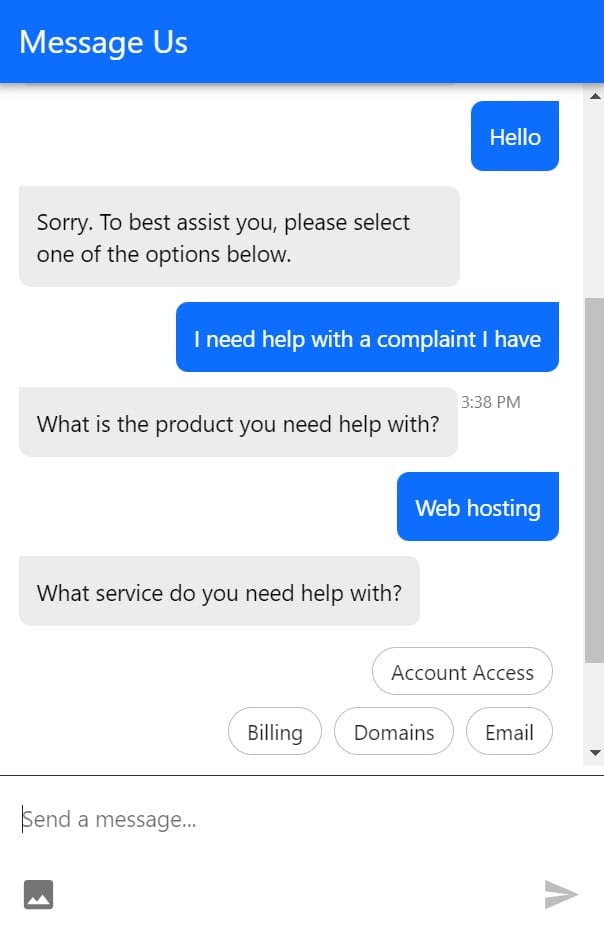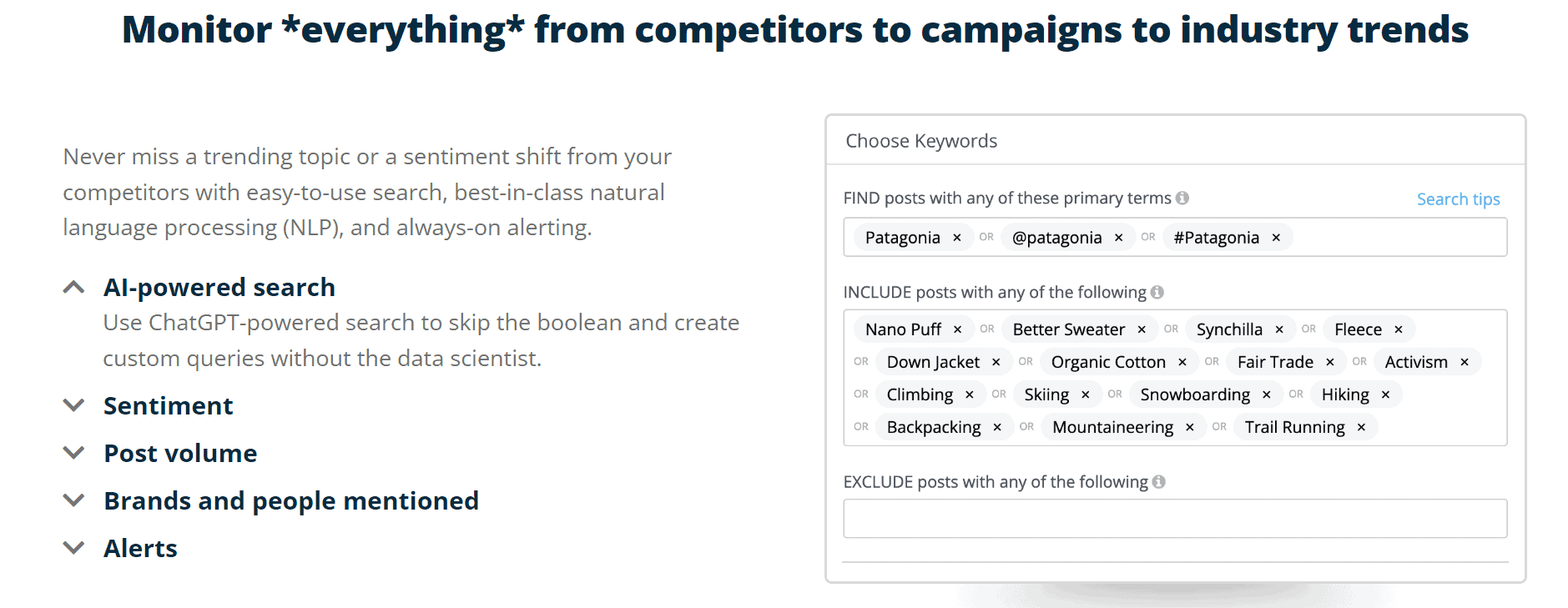Back in the day, social listening was a game of whispers built on word-of-mouth, sporadic sales revenue figures, and a scattergun approach tethered to rigid data sets. However, the winds of change have blown in, and they’ve brought along the power of AI.
With AI and Social Listening tools, those whispers have turned into clear, consistent conversations, and those scattered data points have evolved into a detailed, dynamic picture of your audience’s thoughts, feelings, and behaviors.
It’s a paradigm shift that has transformed the art of understanding customer sentiment into an exact science. Now, let’s explore the transformative power of AI in the realm of social media monitoring and listening.
Understanding Social Listening vs Social Media Monitoring
Before we jump into the newfound value of AI in social listening, it’s important to distinguish the difference between social listening and social media monitoring. Imagine the social media landscape as a bustling city, full of conversations and interactions.
If social media monitoring were a traffic cop, diligently taking note of specific incidents and accidents, then social listening would be the city planner, constantly observing the flow of traffic, identifying patterns, and making changes to improve the overall functioning of the city.

Social media monitoring is about tracking and reacting to specific mentions and interactions on social media platforms. It is a reactive process, like a traffic cop responding to an accident. Alternatively, social listening extends past isolated occurrences to grasp the wider landscape and patterns.
It takes a more proactive approach, much like a city planner who observes, understands, and anticipates to better design the city for the future. And with AI, the city planner just got a supercomputer to process data faster and with more precision than ever before.
The Impact of AI on Social Listening
With AI in play, the process of analyzing large volumes of social data has become much faster and more accurate.
AI’s impact on social listening is a lot like a master chef using a state-of-the-art kitchen; the essence of cooking is still the same, but the tools and techniques have been upgraded to serve up insights more quickly, accurately, and creatively.
With AI, the potential for social listening expands exponentially, bringing game-changing benefits to the way businesses understand and engage with their audiences making it a necessary best practice for understanding social media sentiment.
Let’s take a look at some of the ways AI is impacting social listening in ways that we would’ve never thought possible just years ago.
Six Game-Changing Advantages of AI in Social Listening
Real-Time Analysis
Consider AI as the speed-reading champion of data analysis. It can devour mountains of social media chatter in real time, pulling out relevant patterns, shifts in sentiment, and burgeoning trends at lightning speed.
The speed of what these AI insights give businesses is the agility to respond to evolving narratives or avert crisis situations almost as soon as they begin to surface.
Advanced Sentiment Analysis
AI’s sentiment analysis doesn’t just skim the surface; it dives deep into the undercurrents of public opinion. By discerning nuances like sarcasm from genuine sentiments, AI moves beyond a simplistic positive-negative-neutral sentiment classification.
It provides a rich, detailed, and accurate sentiment profile. It’s almost like a social media mood ring reflecting public opinion.
Predictive Analytics
Utilizing the power of machine learning, AI morphs into a social media fortune teller. It’s not about crystal balls and tarot cards, but meticulously studying past data, identifying patterns, and making educated predictions about future trends and consumer behavior.
This foresight empowers businesses to strategize with proactive precision, outflanking competitors with their anticipatory moves. AI is cool like that.

Competitor Insight
Speaking of outflanking competitors, with AI and social listening, the capabilities to observe and analyze competitors’ strategies, product reception, and customer sentiment, it delivers priceless intel.
This knowledge allows businesses to compare their performance, tweak their strategy, and make well-informed decisions – the kind that keeps them at the top of their game.
Scalability
If social media conversations were a symphony, AI technology would be the maestro conducting it. No matter how loud the conversation crescendos or how intricate the melody becomes, AI can scale up its monitoring and analysis capabilities.
This means that as a business grows and the volume of data increases, AI ensures that not a single note of valuable insight goes unnoticed.
Reduced Workload
Manually sifting through an avalanche of data to pick out pertinent insights could be a laborious and time-intensive task. The introduction of AI into this process significantly lightens this burden, saving time and resources while enhancing efficiency.
Examples + Use Cases
AI Chatbots
One of the best ways for companies to leverage social listening and social media monitoring is through AI Chatbots. AI chatbots have come on the scene as helpful, 24/7 AI assistants that are equally beneficial for users as well as companies. It allows for immediate and helpful responses to customer queries, complaints, and resolutions.

But, one thing that many people don’t know, AI chatbots aren’t just leveraged for better customer service, the data being fed into these chatbots can be used to gather insights into customer behavior, sentiment, and patterns.
This data is used to make the customer experience better, help brands/companies provide a better service to customers, and can be a lucrative way for customers to gain insights.
While social listening is commonly focused on social media, AI chatbots can be a great avenue to explore for companies looking for data on customer interaction, sentiment, and common complaints or patterns that users may have.
AI-Powered GPT Search
Now, it should go without saying that in order to gather many of these AI-powered insights, you’re going to need a tool that does so. Many of these tools have an incredibly helpful feature that allows GPT-powered search within your social listening data that is gathered.
Ok, now in simpler terms.
When the data is collected, oftentimes for thousands of various sites, many of these tools have the capabilities to essentially “Control + F” into this data to find exact keywords and mentions that your brand or company may be more inclined to find and understand.
So, if your company is worried about a malfunction in their product that has been rumored, using this AI-powered search, you can sift through the bulk of data to find data analytics on how many times this word was used or mentioned in relation to your company.
The power this can give brands and companies is unparalleled in being able to pivot and address key concerns or leverage positive sentiment for a brand’s image.

Above is an example from Rivaliq of how this innovative search tool can benefit users who are looking for precise insights on brand mentions or specified verbiage.
Key Considerations When Implementing AI in Social Listening
As AI starts to maneuver its way into social media monitoring and social listening, you should keep a few considerations in mind. These factors will help ensure a successful transition from traditional methods to a more AI-driven approach, maximizing the advantages and minimizing the pitfalls of this technology.
- Data Privacy and Ethics: AI’s power to tap into social media can raise issues around data privacy and ethics. Always respect users’ privacy, comply with legal regulations, and strive for ethical use of data.
- Quality of Data: AI algorithms rely on good-quality data. Ensure the data you feed into your AI tools is accurate, reliable, and relevant to derive meaningful insights.
- Choosing the Right AI Tool: Not all AI tools are created equal. Select a solution that fits your business needs, has a proven track record, and can handle the scale of data your business deals with.
- Continual Learning and Adaptation: AI technologies, particularly machine learning algorithms, improve over time. Be prepared for a period of learning and adaptation where the system will need to be trained and fine-tuned.
In conclusion, while AI-powered social listening holds significant promise, it’s crucial to approach its implementation strategically. By taking into account these key considerations, you can help ensure a smooth and effective transition to AI-driven social listening.
Final Thoughts on AI and Social Listening
As we bring this discussion to a close, it’s evident that AI’s presence in social listening and monitoring is more than a mere upgrade. We’ve laid bare the numerous ways AI is transforming the field, from providing real-time insights, and deep sentiment analysis, to predicting future trends and scrutinizing competitors’ strategies.
These advancements serve as a testament to AI’s transformative power, providing businesses with tools to understand their audience like never before. They allow us to take a look under the hood into the heart of the conversations, analyze the sentiments accurately, and respond proactively, all in real time. This unprecedented access to insights enables organizations to stay ahead of the curve, anticipate changes, and adapt swiftly to maintain their competitive edge.
The AI revolution in social listening is just getting started.


